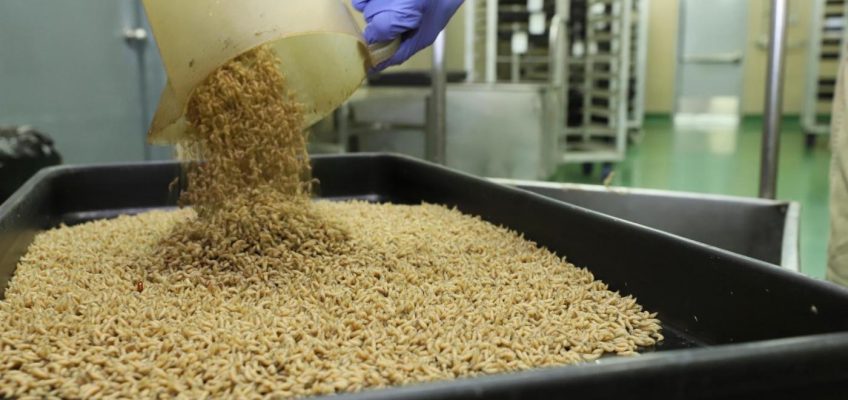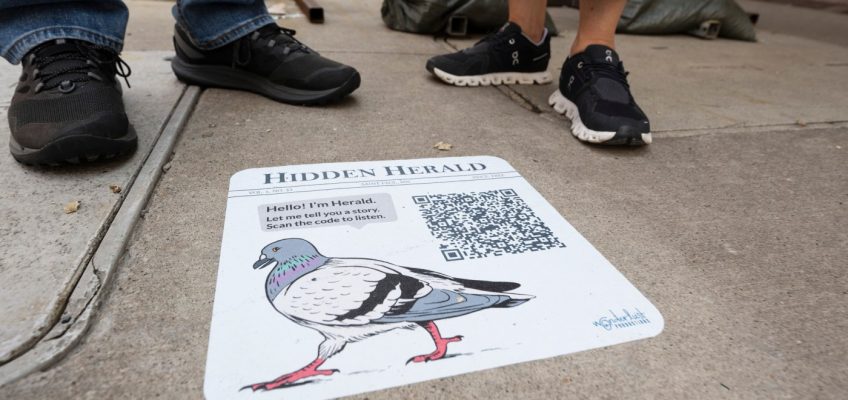When the likes of Wolverine, Cyclops, Nightcrawler and Storm convert the downtown Minneapolis Club into Professor Charles Xavier’s renowned institute for mutant superheroes this weekend, Daryl Lawrence will be there with pride, but not just because of the colorful sessions he oversees as program director for “The Uncanny Experience,” a two-day immersive fandom convention celebrating all things X-Men.
This is the third year “The Uncanny Experience” has geeked out in the Twin Cities, but it’s the first year Lawrence will host a book launch for his 512-page reference guide to a fan-favorite Marvel Comics series from the 1980s and ’90s.
Frederick Melo
There have been more than 130 distinct mutant superhero spin-off series since the first “X-Men” comic launched in 1963, but if you’re assuming that “True North,” his issue-by-issue comic book tell-all, focuses on a popular X-title like the “X-Men,” “X-Men Unlimited,” “X-Factor” or “X-Force,” you’d be wrong, eh?
Lawrence — not only an author but the facilities manager for the University of Minnesota’s Bell Museum — started running down a distinctly Canadian rabbit hole a decade ago.
It was the same rabbit hole I fell down around September 1985. As a youngster growing up in Boston, I was an awkward 8-year-old at the time, entering fourth grade a year young, and the colorful comic book rack in the Dedham Mall magazine stand glowed at me reassuringly.
The 1985 “X-Men/Alpha Flight” crossover ran $1.50 per comic — no small sacrifice for my working-class parents — and by the time I was halfway done with the two-part mini-series, I was completely hooked, but not on the X-Men.
Like Lawrence, I was smitten with the X-Men’s emotionally fraught Canadian counterparts, a barely-holding-its-own superhero team known as Alpha Flight, who were constantly bumping heads with their government handlers in Ottawa while darting around Vancouver, Toronto, Quebec and the Yukon.
The cover page from “True North: A Complete Reference Guide and Analysis of Alpha Flight’s First Volume,” by Daryl Lawrence, the facilities manager for the University of Minnesota’s Bell Museum. (Courtesy of Daryl Lawrence)
There was the diminutive Puck, whose tiny body could hurdle through foes like a bowling ball, and Sasquatch, the scientist Walter Langkowski who transformed into a Hulk-like mythical Great Beast of the North with but a thought. And then there was Snowbird, an Inuit demi-goddess whose mission on Earth was to slay the mythical Great Beasts of the North. (If you want to see how that storyline plays out, pick up issue No. 23, circa mid-1985).
Led by a man in a super-suit, code name Guardian, and quickly replaced by his widow, code name Vindicator, the troubled team debuted in the pages of the X-Men comics in April 1979, where they made a failed attempt to retrieve their former teammate, Wolverine. They gained their own ongoing monthly series in 1983, and what a series of dramatic mishaps followed!
Superheroes when I needed them
The semi-tragic “Alpha Flight” — which still draws fan pages on Facebook and across the Internet — was penned and drawn for its first 28 glorious issues by comics genius John Byrne, who was born in England but spent most of his childhood moving about Canada. Byrne is perhaps better known for his work on the “X-Men” and “Superman,” but he and subsequent writers — notably the talented Bill Mantlo — struck a kind of storytelling gold in the first 60 issues or so of the original “Alpha Flight,” which ran for 130 issues from 1983 to 1994.
I have those first 60 issues bagged and boxed in my basement, where they live on, testament to a childhood that saw its share of upheaval. You see, for a time, Alpha Flight was like surrogate family. In sixth grade, I shifted from being bused to various under-resourced and fight-prone Boston public schools to being a day student at a suburban boarding school that was even more academically and culturally challenging.
My parents, Caribbean immigrants who ran a home daycare, had no way of preparing me for these posh young students and their unfathomable stories about ski vacations and summer trips abroad. Then, a few months into that sixth grade year, a fire destroyed our home and business, leaving us destitute. I was at the mercy of the wind, or so it felt, and I’d spend the rest of the school year wafting from home to home, living with whatever kind family would take me in — my grandmother’s pastor, my mother’s church friend, my older sister’s school teacher, a middle school classmate.
None to my knowledge were Canadian, but they were superheroes when I needed them.
It’s a fascinating thing to bounce from home to home in quick succession like an unofficial foster child. One particular host, my friend and classmate Patrick Keefe, would go on to become a true-crime author of much renown. His family fed me my first taste of asparagus, which I spit up in disgust and hid in my napkin on his dining room table. Pat’s 2018 best seller, “Say Nothing,” about the lives of unlikely militants in the Irish Republican Army, is now an FX television series of the same name.
What does any of this have to do with a dysfunctional family of Canadian superheroes, and why does “True North: A Complete Reference Guide and Analysis of Alpha Flight’s First Volume” run to 512 pages?
The answer for me is that my “Alpha Flight” collection was the one treasured possession I carted from house to house that tumultuous sixth grade year. The comics were full of stories that had to be read and re-read, absorbed — as Lawrence pointed out to me this week — like a soap opera.
Character in the closet
For “True North,” Lawrence interviewed six artists, editors and writers from the series, but not the elusive Byrne or the prolific Mantlo, a competitive rollerblader who suffered permanent brain damage after being struck by a car in 1992. Their analysis peppers all 512 pages, which offer insight into the choices made across all 130 issues, two annuals and guest appearances in other Byrne and Mantlo comics like “The Incredible Hulk” and “Rom: Spaceknight.”
For instance, Lawrence maintains that a particularly complex character — the abrasive Northstar, a competitive skier and former Quebec separatist with a sharp tongue and Spock-like elven ears — was written from the start by Byrne and fellow “Alpha Flight” creator Chris Claremont to be gay — Marvel’s first homosexual superhero! — 13 years before Northstar officially came out of the closet in 1992.
“John Byrne wrote him as a gay man, but the recently-departed (Marvel editor) Jim Shooter said ‘No, we can’t say that,’” said Lawrence, who noted Marvel writers found a way to hint at his sexuality as far back as 1986. “Under Bill Mantlo, he starts getting sick and starts coughing a lot.”
Northstar’s unnamed illness — the subject of an eight-issue story arc — seemed to mirror the nation’s AIDS epidemic at the time, catching the interest of gay magazines like The Advocate, who were soon to be disappointed.
In issue No. 50, Loki — yes, that Loki — reveals the origin of Northstar’s mystery disease: He’s actually an ailing elf.
“Loki says, you’re really an elf and you need to go back to your people and they will help you out because you have an ‘elf sickness,’” said Lawrence, noting some fans never forgave Mantlo for doing what he had to do to appease his higher-ups. “That whole storyline was designed for him to get AIDS and die of it.”
Given the opportunity to address one of the most serious and sensitive issues of the day, Marvel had blinked.
To the chagrin of The Advocate and probably more than a few Marvel writers, the closeted Northstar lived on, eventually joining the X-Men, and, much like myself, getting married around 2012 and enjoying a long and colorful life.
Lawrence’s softcover “True North” retails for $30 at Barnes & Noble. My Christmas wish-list is set!
IF YOU GO
The Uncanny Experience runs 10 a.m. to 5 p.m. Saturday and Sunday at the Minneapolis Club, 729 Second Ave. S.
Tickets start at around $100 or $11.50 for kids 12 and under.
Swiss village cashes in as tourists pay to visit dock featured in hit K-drama ‘Crash Landing On You’
Dean Cain honored to have played Superman
A simple recipe for tsukudani, an everyday Japanese side dish to eat with hot rice
Paul McCartney to play his first local show in nearly a decade in October
Five super simple summery recipes




